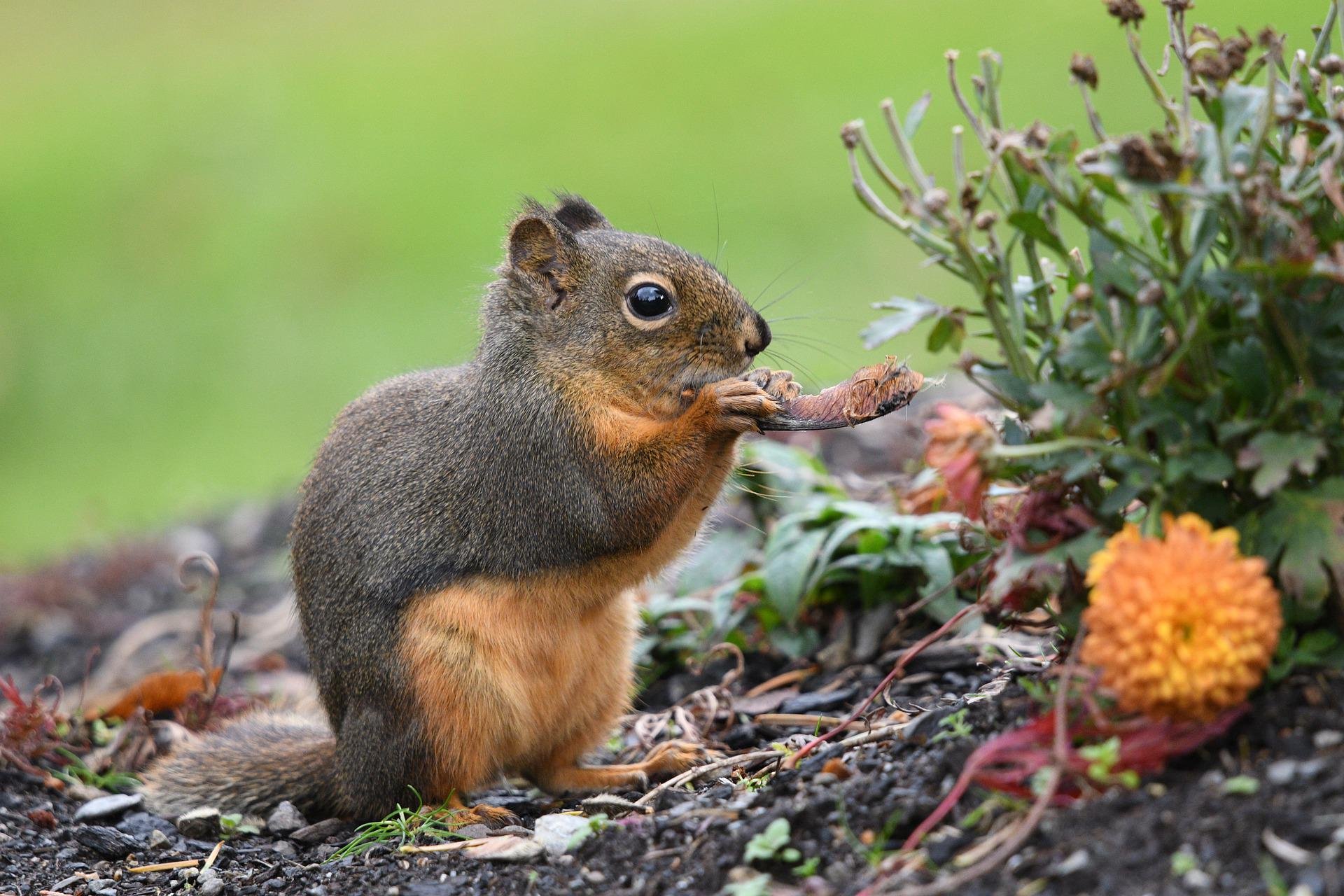Words On Wellness: Squirrelly
By Karin Uphoff
September marks the time to finish painting and building projects, plus harvest, preserve and store food before a hoped-for rainy season. Wildlife and people alike, tend to instinctually ‘squirrel away’ resources and can get engrossed in autumn activities, sometimes to the point of distraction. Be aware as you drive, of squirrels darting across the roads at inopportune moments because of focused foraging. When feeling danger, squirrels will try to confuse predators by running in various directions. Sometimes you see them halt in the middle of the road trying to figure out which way to run.
We have two native tree squirrels here, Douglas squirrels and Western Grey squirrels, plus chipmunks. The Douglas squirrel, also known as the pine squirrel or chickaree, is smaller and reddish-brown on top with white or orangish undersides. They live in mixed fir-redwood or pygmy forests where they feast on pine seeds. All pine seeds (we call them pine nuts) are edible and healthy for humans as well, but a lot of work to shell when you don’t have a squirrel’s incisors!. In fall, they cut green pine cones from tree limbs and store them in mounds called middens. During the summer months, they construct nests in the forks of tree limbs, while in winter months, they shelter in tree crevices, holes from deserted woodpecker nests or under their underground food stores. Otherwise they are seen running up and down tree trunks and scurrying across the ground.
The western gray squirrel, by contrast, needs healthy oak or coniferous forest with continuous canopy that allows them nearly exclusive arboreal travel - they won’t use fragmented habitat with lots of exposed spaces and few trees. Stick nests and tree cavities away from human development is what they prefer as shelter. They love acorns (a great source of protein), truffles best and bury their stash over a wide area to dig up later. Since they always miss a few, they inadvertently plant oak trees, along with spreading truffle spores. Both these species of squirrels will also eat mushrooms, seeds, berries, fruit, sap, insects and the occasional bird egg.
As busy as squirrels are, young skunks, raccoons, foxes and weasels are also dispersing from their natal homes in search of a place to be. Take time to slow down this September and watch the action around you.
Douglas squirrel image by Veronika Andrews from Pixabay






